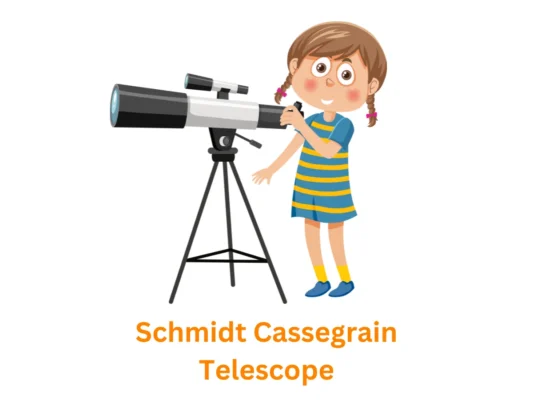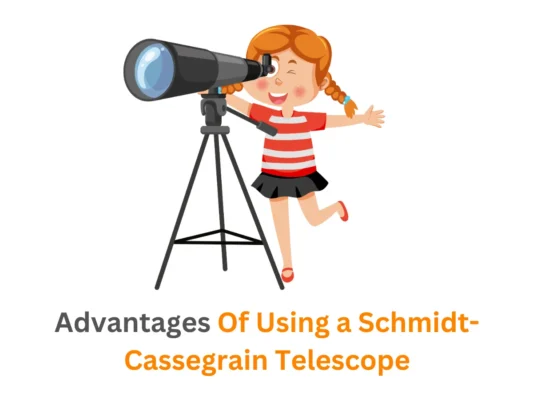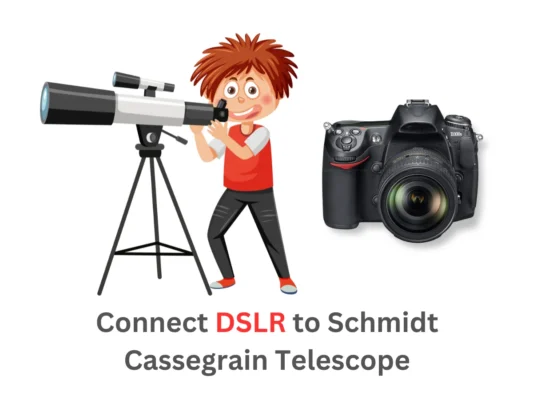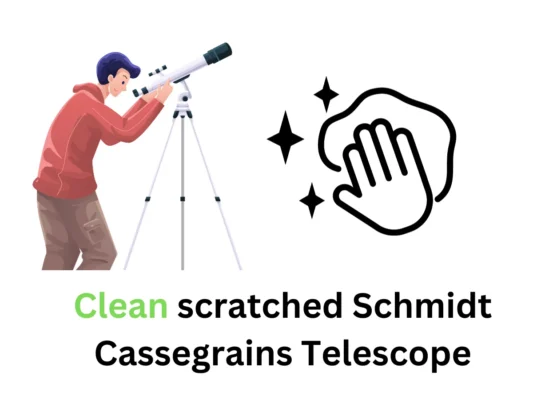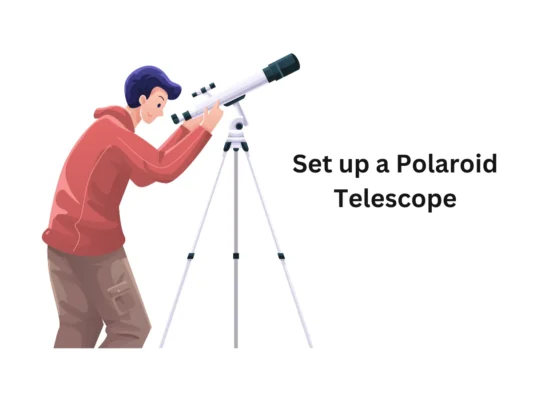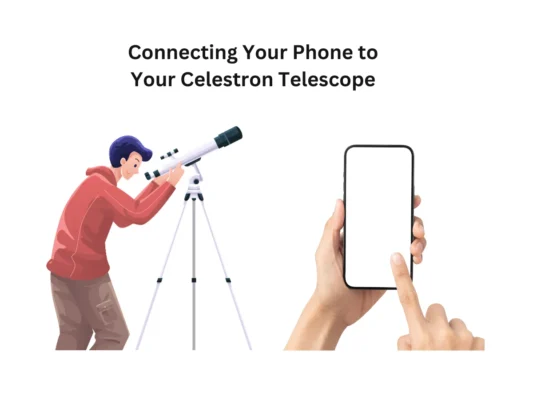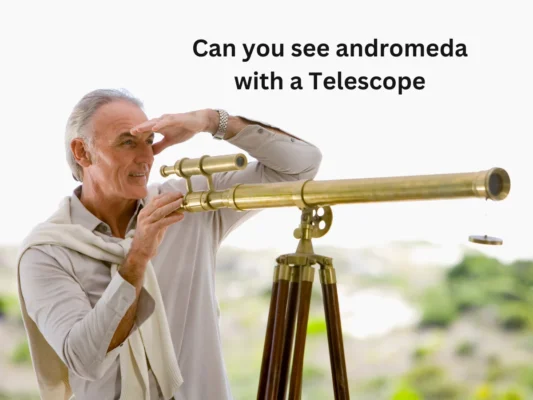Telescopes are a great tool for amateur astronomers that allow you to observe galaxies, stars, and planets far away from our own. But if you aren’t willing to commit to setting up a large stationary telescope in your backyard, don’t worry there are highly portable options out there perfect for stargazing on the go. In this blog post, we’ll be exploring the best portable telescopes on the market today that offer amazing features and convenience factors at an affordable price point.
List of Top 6 Best Portable Telescopes
Our comprehensive guide to the best portable telescopes includes reviews and recommendations for top models, along with helpful tips and advice to help you choose the right telescope for your needs. Whether you’re a beginner or an experienced astronomer, we’ve got you covered with the best options for all levels of stargazers.
[affiliatable id=’172200′]
The Levenhuk Skyline Portable Travel 50 Refractor Telescope with Backpack is the perfect choice for amateur astronomers and budding stargazers. With its 50 mm aperture, 360mm focal length, and AZ mount, it’s great for both terrestrial and astronomical observations allowing you to explore our incredible universe with ease.
In addition, the telescope is lightweight, compact, and perfect for travel. You can easily assemble it in a few minutes without any special tools or skills. Plus, the included backpack makes it easy to carry your telescope wherever you want to go.
Better yet, this purchase comes with a lifetime warranty to make sure your telescope lasts through all of your adventures.
Specifications
| Brand |
Levenhuk |
| Eye Piece Lens |
Barlow |
| Objective Lens Diameter |
50 Millimeters |
| Telescope Mount |
Altazimuth Mount |
| Focus Type |
Manual Focus |
| Power Source |
Solar Powered |
| Finderscope |
Reflex |
| Item Weight |
4.81 Pounds |
[joomdev-wpc-pros-cons disable_title=”yes” wpc_style=”wppc-view1″ title_tag=”H3″ title=”Title Here” pros_title=”Pros” cons_title=”Cons” button_text=”Get it now” disable_button=”yes” button_link=”” button_link_target=”_SELF” button_rel_attr=”dofollow” verdict_text=””][joomdev-wpc-pros]
- Get clear, detailed views of the stars.
- Easy to use and assemble.
[/joomdev-wpc-pros][joomdev-wpc-cons]
[/joomdev-wpc-cons][/joomdev-wpc-pros-cons]

Introducing the Maksutov-Cassegrain Telescope. This telescope is a powerful and highly precise beginner’s telescope, designed with a Maksutov-Cassegrain optical system and a fully multi-coated glass lens.
Not only can you use it to observe vivid, high-contrast images in the day, like birds and wildlife, but you can also explore the night sky with its planets such as Saturn and Jupiter, plus moon craters are all within your view.
We have also designed this telescope with a detachable lid so you can get an insight into how it works inside. What’s more, its long focal length of 750mm is packed into a tiny 20mm tube making it highly portable and easy to carry around for your adventures anytime. Get yours today to see what wonders await.
Specifications
| Brand |
SARBLUE |
| Optical Tube Length |
200 Millimeters |
| Objective Lens Diameter |
60 Millimeters |
| Product Dimensions |
15″D x 7″W x 4″H |
| Focus Type |
Manual Focus |
| Power Source |
Adapter |
| Finderscope |
Reflex |
| Lens Coating |
Fully Multi-Coated |
| Zoom Ratio |
37.5 multiplier x |
[joomdev-wpc-pros-cons disable_title=”yes” wpc_style=”wppc-view1″ title_tag=”H3″ title=”Title Here” pros_title=”Pros” cons_title=”Cons” button_text=”Get it now” disable_button=”yes” button_link=”” button_link_target=”_SELF” button_rel_attr=”dofollow” verdict_text=””][joomdev-wpc-pros]
- Enjoy high-contrast images.
- The detachable lid reveals the internal construction of the telescope.
[/joomdev-wpc-pros][joomdev-wpc-cons]
- Requires some technical expertise to setup.
[/joomdev-wpc-cons][/joomdev-wpc-pros-cons]

Discover the wonders of the sky with a 70mm Aperture 500mm AZ Mount Fully Multi-Coated Optics Astronomical Refracting Telescope. This telescope offers excellent quality optics with a 500 mm (f/7.1) focal length and 70 mm aperture, providing stunning views and protecting your eyes while you explore.
Our telescope includes two excellent quality eyepieces (25 mm and 10mm), as well as a 3x Barlow lens that trebles the magnifying power of each eyepiece, plus a 5×24 finderscope for easy object locating.
With its adjustable aluminum tripod and wireless remote control, this telescope is both portable and convenient to use. Plus, it comes with a phone adapter and carrying bag so you can take incredible photos from anywhere.
Specifications
| Brand |
HEXEUM |
| Model Name |
Portable Telescopes |
| Eye Piece Lens |
Barlow |
| Telescope Mount |
Altazimuth Mount |
| Focus Type |
Manual Focus |
| Power Source |
Adapter |
| Finderscope |
Reflex |
| Item Weight |
4.59 Pounds |
[joomdev-wpc-pros-cons disable_title=”yes” wpc_style=”wppc-view1″ title_tag=”H3″ title=”Title Here” pros_title=”Pros” cons_title=”Cons” button_text=”Get it now” disable_button=”yes” button_link=”” button_link_target=”_SELF” button_rel_attr=”dofollow” verdict_text=””][joomdev-wpc-pros]
- 500mm focal length.
- 70mm aperture.
- Excellent quality eyepieces.
[/joomdev-wpc-pros][joomdev-wpc-cons]
- Not suitable for experienced.
[/joomdev-wpc-cons][/joomdev-wpc-pros-cons]

The Sky-Watcher EvoStar 100 APO Doublet Refractor is a perfect telescope for astrologers of all levels. This expertly matched doublet objective comes with an included synthetic fluorite element providing excellent color correction for both visual and photographic use. As your knowledge and skill set evolves, there’s no need to replace this telescope so you can enjoy a lifetime of star gazing.
Find focus with ease using the 10:1 dual-speed Crayford-style focuser, which is suitable for any eyepiece or camera. In addition to the sleek black telescope, you’ll receive a foam-lined aluminum hard case ideal for travel and storing your equipment, along with the 8×50 Right Angle Correct Image (RACI) Finderscope, 2” Dielectric Diagonal, 5mm and 25mm LET Eyepieces, 1.25” Adapter, Mounting Rings, and a V-Style Dovetail. So get ready to explore the stars with the Sky-Watcher EvoStar 100 APO Doublet Refractor.
Specifications
| Brand |
Sky Watcher |
| Model Name |
S11120 |
| Eye Piece Lens |
Barlow |
| Objective Lens Diameter |
100 Millimeters |
| Product Dimensions |
41″D x 12″W x 15″H |
| Focus Type |
Auto Focus |
| Finderscope |
Reflex |
| Item Weight |
8.4 Pounds |
[joomdev-wpc-pros-cons disable_title=”yes” wpc_style=”wppc-view1″ title_tag=”H3″ title=”Title Here” pros_title=”Pros” cons_title=”Cons” button_text=”Get it now” disable_button=”yes” button_link=”” button_link_target=”_SELF” button_rel_attr=”dofollow” verdict_text=””][joomdev-wpc-pros]
- Superior color correction for visual and photographic uses.
- 10:1 dual-speed focuser for easy focusing.
[/joomdev-wpc-pros][joomdev-wpc-cons]
[/joomdev-wpc-cons][/joomdev-wpc-pros-cons]

The Orion Travel Refractor Telescope is the perfect choice for anyone wanting to explore the wonders of astronomy, both day and night! The complete 102mm refractor telescope gives you clarity and brightness that allows it to be used in a variety of ways. It comes with two high-quality Plossl eyepieces that offer 24x and 60x magnification respectively.
And thanks to the rugged carry case, all telescopes, tripods, and accessories can be conveniently packed up for travel anywhere. The stainless steel tripod with a pan head is also included to make sure your viewing experience is second to none.
But that’s not all. You’ll also get Orion’s MoonMap 260, which helps identify some 260 lunar surface features including craters, mountain ranges, “seas” and more. Don’t wait another minute the Orion Travel Refractor Telescope is here for you to take your exploration further than ever before.
Specifications
| Brand |
Orion |
| Eye Piece Lens |
Plossl |
| Objective Lens Diameter |
102 Millimeters |
| Telescope Mount |
Altazimuth Mount |
| Focus Type |
Manual Focus |
| Finderscope |
Reflex |
| Lens Coating Description |
Fully Multi-Coated |
| Zoom Ratio |
60 multiplier x |
[joomdev-wpc-pros-cons disable_title=”yes” wpc_style=”wppc-view1″ title_tag=”H3″ title=”Title Here” pros_title=”Pros” cons_title=”Cons” button_text=”Get it now” disable_button=”yes” button_link=”” button_link_target=”_SELF” button_rel_attr=”dofollow” verdict_text=””][joomdev-wpc-pros]
- Up to 60x magnification with premium Plossl eyepieces.
- Portable.
[/joomdev-wpc-pros][joomdev-wpc-cons]
- Limited use for deep-sky objects.
[/joomdev-wpc-cons][/joomdev-wpc-pros-cons]

The Celestron 114LCM Computerized Newtonian Telescope is perfect for amateur astronomers of all skill levels. With its advanced all-glass optics and computerized GoTo mount, it can automatically locate up to 4,000 celestial objects in the night sky. Even if you’re not sure where to look, thanks to its Sky Tour button, all you need to do is press the button and your telescope will generate a list of the best objects currently available for you to view.
Coming with a full-height tripod, two high-quality eyepieces (25mm & 9mm), and a free download of one of the top-rated astronomy software programs, Stary Night Software, this Celestron telescope has everything you need for an amazing stargazing experience. Whether you’re just starting out or already an experienced astronomer, this telescope will help you take your exploration of the night sky to the next level.
Specifications
| Brand |
Celestron |
| Model Name |
31150 |
| Objective Lens Diameter |
114 Millimeters |
| Telescope Mount |
Motorized altazimuth |
| Product Dimensions |
35″D x 16″W x 11″H |
| Focus Type |
Manual Focus |
| Power Source |
Battery Powered |
| Finderscope |
Reflex |
| Item Weight |
20 Pounds |
[joomdev-wpc-pros-cons disable_title=”yes” wpc_style=”wppc-view1″ title_tag=”H3″ title=”Title Here” pros_title=”Pros” cons_title=”Cons” button_text=”Get it now” disable_button=”yes” button_link=”” button_link_target=”_SELF” button_rel_attr=”dofollow” verdict_text=””][joomdev-wpc-pros]
- Automated search for 4,000 celestial bodies.
- High-quality optics for enhanced image quality.
[/joomdev-wpc-pros][joomdev-wpc-cons]
- Setup of this telescope can be time-consuming.
[/joomdev-wpc-cons][/joomdev-wpc-pros-cons]

Buying Guide
To help you make an informed decision, we have put together a buying guide for the best portable telescopes. Here are some important factors to consider before making your purchase:
Aperture Size: The size of the telescope’s aperture is the most important factor to consider, as it determines the telescope’s light-gathering ability. The larger the aperture size, the more light the telescope can gather, resulting in brighter and clearer images. For the best viewing experience, we recommend a telescope with an aperture size of at least 70 mm.
Magnification: Magnification is another important factor to consider when choosing a portable telescope. A higher magnification doesn’t necessarily mean a better viewing experience. The rule of thumb is to choose a telescope with a magnification range of 20x to 50x per inch of aperture.
Design: Portable telescopes come in different designs, including refractors, reflectors, and catadioptric telescopes. Refractor telescopes use lenses to focus light, while reflector telescopes use mirrors. Catadioptric telescopes combine the two designs, using both mirrors and lenses. When choosing a design, consider your viewing needs and mobility requirements.
Portability: Portability is a key factor to consider when selecting a portable telescope. Look for a telescope that is lightweight, compact, and easy to set up and take down. This will make it easier for you to take it with you on trips and use it on the go.
Accessories: A good portable telescope should come with essential accessories, such as eyepieces, a tripod, and a finder scope. Look for telescopes that include all necessary accessories or have the option to purchase them separately.
Budget: Portable telescopes vary in price, and your budget will ultimately determine the type and quality of telescope you can get. Determine your budget upfront and research telescopes that fit within your price range.
You can check reviews of telescopes here
Conclusion
In conclusion, finding the best portable telescope is all about understanding your viewing needs, mobility requirements, and budget. Consider the factors we’ve outlined in this buying guide before making your purchase, and you’ll be on your way to a thrilling and unforgettable stargazing experience.
FAQs
What kind of magnification can I expect from the best portable telescopes?
The best portable telescopes come equipped with multiple eyepieces, allowing for a range of different magnifications depending on your needs. High-quality portable telescopes can achieve magnifications of up to 300x, making it easy to observe even the most distant celestial objects.
How big are the best portable telescopes?
Portable telescopes vary in size, but the best models are small enough to be easily transported and set up in a matter of minutes. The most compact models can be as small as a few inches in length, while larger models may be a few feet long and weigh several pounds.
What kind of celestial objects can I observe with a portable telescope?
Portable telescopes are suitable for viewing a wide range of celestial objects, from the moon and nearby planets to distant galaxies and nebulae. The best portable telescopes come equipped with high-quality optics that allow for clear, detailed views of celestial objects, even from urban areas with high light pollution.
What kind of accessories are included with the best portable telescopes?
The best portable telescopes come with a range of accessories to enhance your observing experience, including eyepieces, finderscopes, and carrying cases. Many models also come with smartphone adapters or other technology that allows you to capture images and share your observations with others.
What is the price range for the best portable telescopes?
The price of portable telescopes can vary widely depending on the quality of the optics, the size and weight of the telescope, and the range of included accessories. However, the best portable telescopes typically range from around $100 to $500, with higher-end models costing up to $1000 or more.
